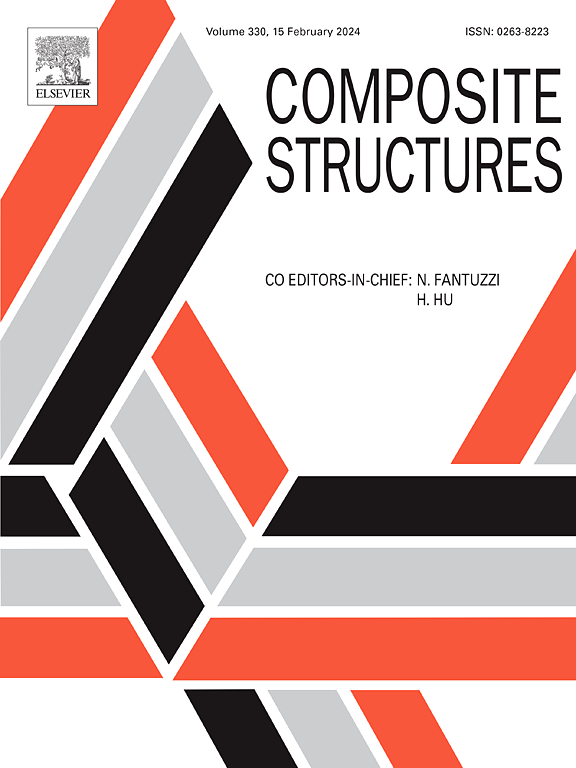Energy harvesting from delaminated variable stiffness piezolaminated plate and shell panels
IF 6.3
2区 材料科学
Q1 MATERIALS SCIENCE, COMPOSITES
引用次数: 0
Abstract
Energy harvesting from piezolaminated panels has been greatly explored by researchers in past few decades. Delamination is a very common mode of failure in piezolaminated composites and affects the vibration response of the structure. In the present study, the effect of delamination on the Constant and Variable stiffness laminate energy harvester is studied. The energy harvesting characteristics like the voltage, power, and motion frequency response functions are studied. A nine-noded isoparametric element is used with first-order shear deformation theory-based formulation for the analysis of delaminated energy harvester. The continuity of displacement and rotational variables at the delamination fronts is achieved by the point continuity method. The effect of fiber path on the Variable stiffness delaminated harvester is studied and the variations of voltage, power and relative motion FRFs are plotted for different fiber paths. The effect of the location of delamination on different FRFs is also studied. The motion FRFs can be useful in detection of location of delamination FRFs. Parametric study of different geometric and boundary conditions is performed. The current study aims to present a benchmark study on the effect of delamination on different energy harvesting characteristics of the piezolaminated plate and shell constant and variable stiffness panels.
从分层变刚度压层板和壳板收集能量
在过去的几十年里,研究人员对压电层叠板的能量收集进行了大量的探索。分层是压层复合材料中常见的破坏模式,影响结构的振动响应。本文研究了分层对恒刚度和变刚度叠层能量采集器的影响。研究了电压、功率和运动频率响应函数等能量收集特性。采用基于一阶剪切变形理论的九节点等参单元对分层能量采集器进行分析。采用点连续法实现了分层前沿位移和旋转变量的连续。研究了光纤路径对变刚度分层收割机的影响,绘制了不同光纤路径下电压、功率和相对运动频响的变化曲线。研究了分层位置对不同频响系数的影响。运动频响可用于检测分层频响的位置。对不同几何条件和边界条件进行了参数化研究。本研究旨在对分层对压层化板壳定刚度和变刚度板壳不同能量收集特性的影响进行基准研究。
本文章由计算机程序翻译,如有差异,请以英文原文为准。
求助全文
约1分钟内获得全文
求助全文
来源期刊

Composite Structures
工程技术-材料科学:复合
CiteScore
12.00
自引率
12.70%
发文量
1246
审稿时长
78 days
期刊介绍:
The past few decades have seen outstanding advances in the use of composite materials in structural applications. There can be little doubt that, within engineering circles, composites have revolutionised traditional design concepts and made possible an unparalleled range of new and exciting possibilities as viable materials for construction. Composite Structures, an International Journal, disseminates knowledge between users, manufacturers, designers and researchers involved in structures or structural components manufactured using composite materials.
The journal publishes papers which contribute to knowledge in the use of composite materials in engineering structures. Papers deal with design, research and development studies, experimental investigations, theoretical analysis and fabrication techniques relevant to the application of composites in load-bearing components for assemblies, ranging from individual components such as plates and shells to complete composite structures.
 求助内容:
求助内容: 应助结果提醒方式:
应助结果提醒方式:


